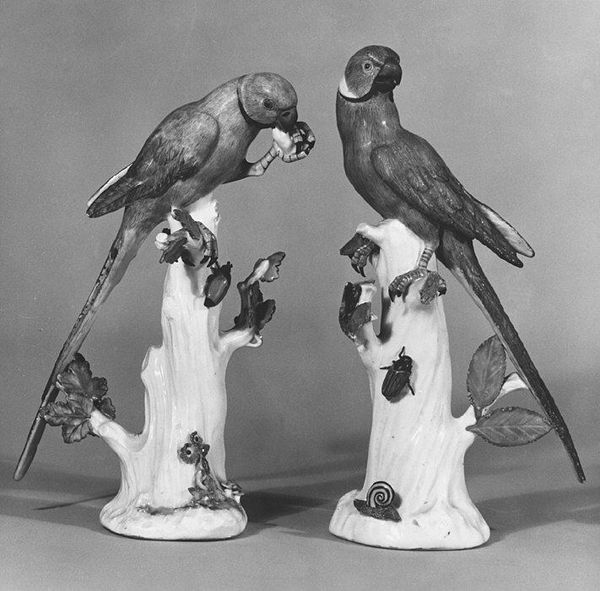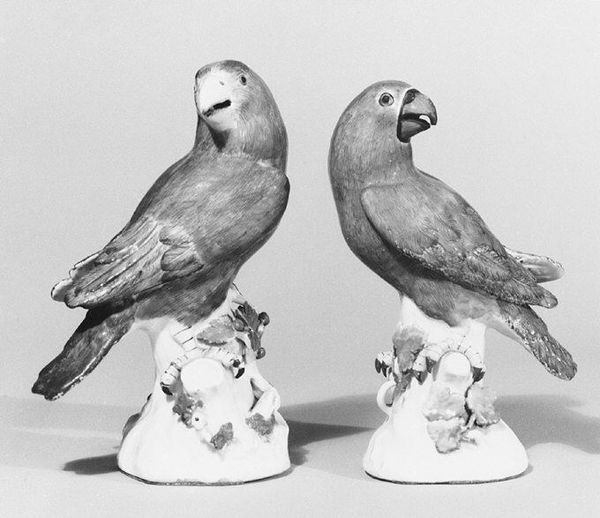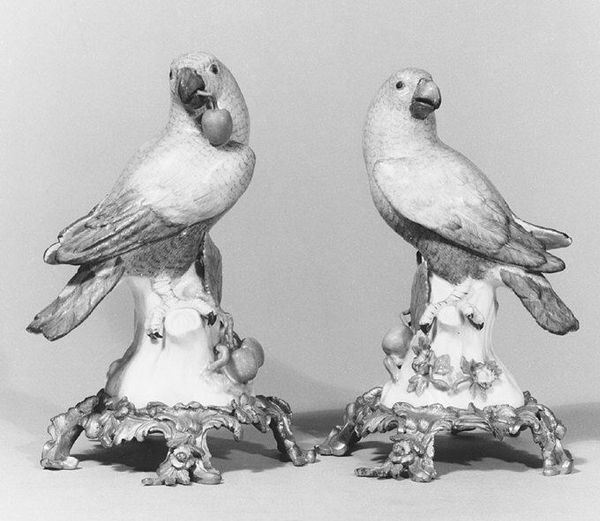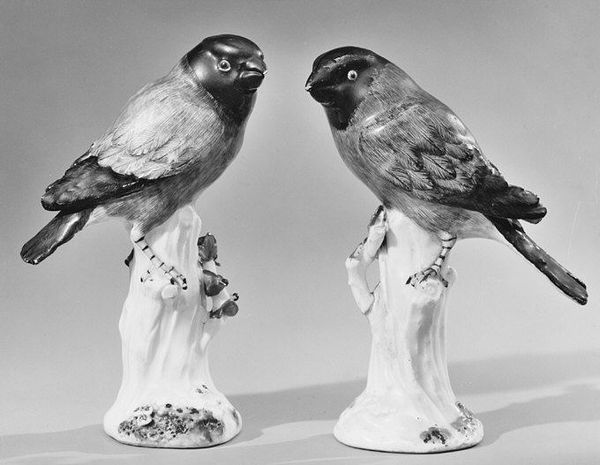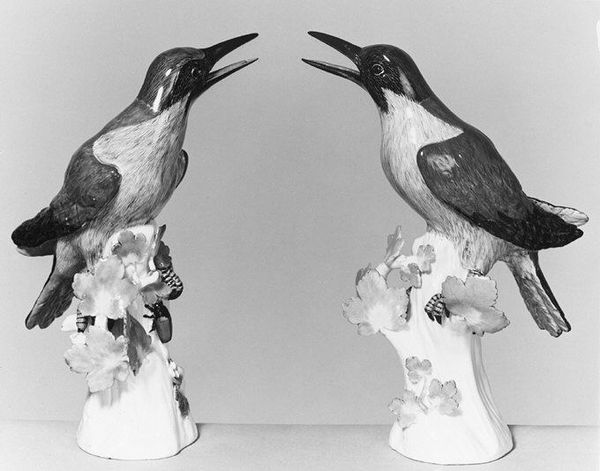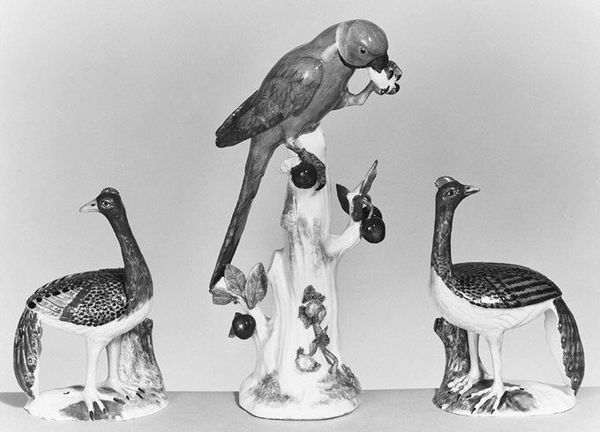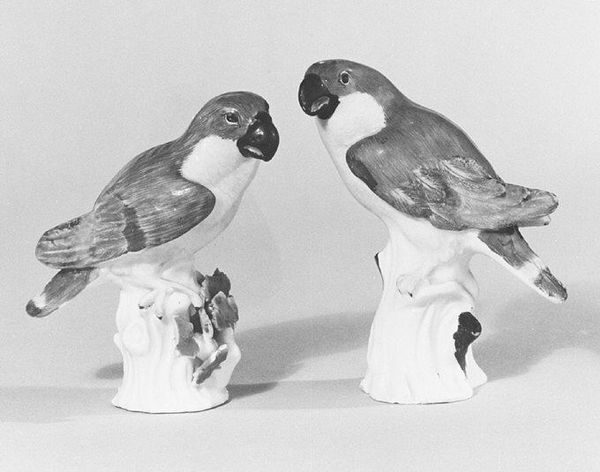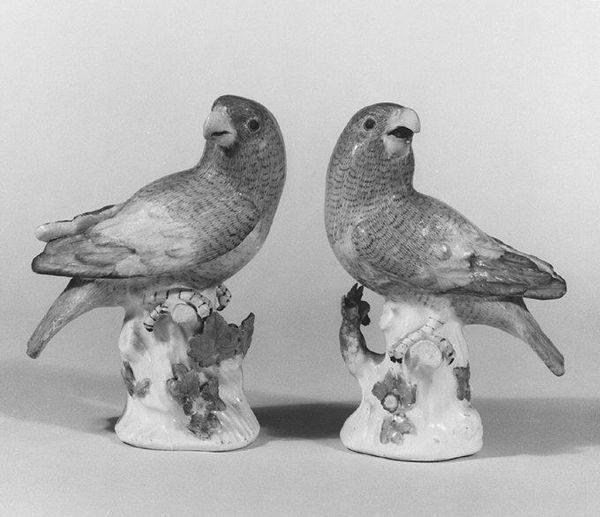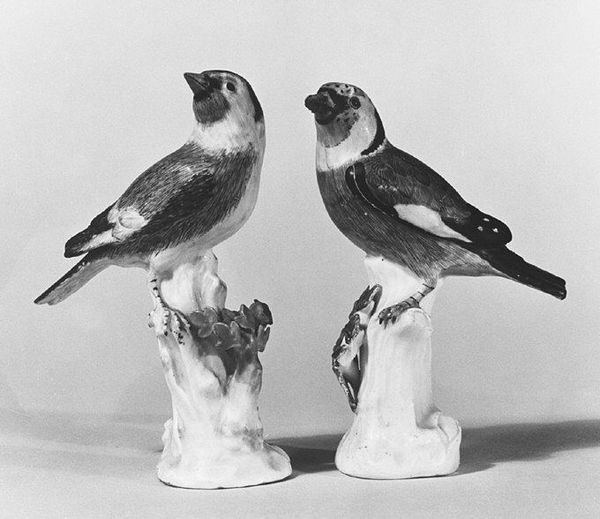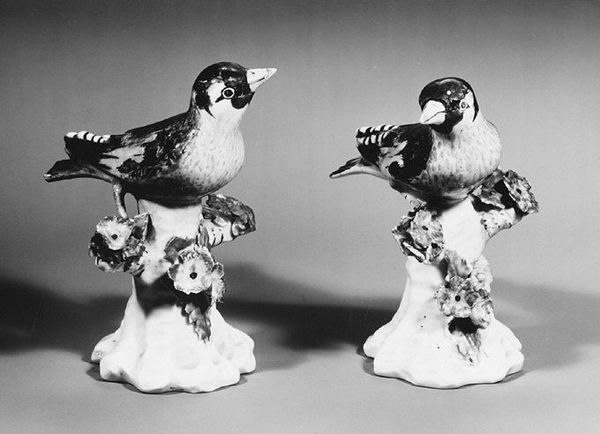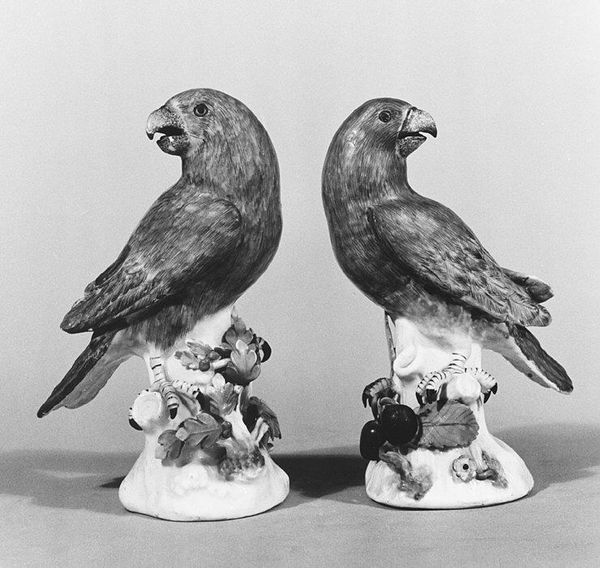
ceramic, porcelain, sculpture
#
sculpture
#
ceramic
#
porcelain
#
sculpting
#
sculpture
#
decorative-art
#
rococo
Dimensions: Height: 10 9/16 in. (26.8 cm)
Copyright: Public Domain
Editor: Here we have "Indian parrot (one of a pair)," created around 1741 by the Meissen Manufactory. They’re porcelain sculptures, quite delicate looking. I’m curious about how functional art objects like these intersected with craft in the 18th century. What can you tell me about it? Curator: Well, let's start with the material: porcelain. In 1741, it was a highly prized substance, almost alchemical. The Meissen Manufactory held a near-monopoly in Europe for hard-paste porcelain production. Who would have purchased such a delicate object and why do you think that this piece represents luxury consumption? Editor: The parrots, perched on these little tree trunks crawling with insects…they do seem purely decorative. Were these aimed at wealthy collectors to show off refined taste? Curator: Precisely! And consider the labour involved. Each parrot, each tiny beetle, painstakingly sculpted and painted. Meissen employed skilled artisans working under stringent workshop conditions. This piece, then, becomes a manifestation of social stratification, where the elite flaunted the products of skilled, often anonymous labor. Doesn't this disrupt any pre-conceived hierarchy that may be attached to art and craft? Editor: Absolutely, seeing it as a product of both skill and social hierarchy changes everything. It wasn’t just about aesthetics; it was about demonstrating economic power and status through these objects. How does the rococo style contribute to that? Curator: The Rococo style, with its love of asymmetry, playful themes, and natural motifs, was intrinsically linked to aristocratic patronage and consumption. The parrots, exotic creatures themselves, further amplified the sense of luxury and global reach. Editor: It's fascinating to consider how something that appears simply decorative on the surface can reveal so much about the production and consumption patterns of its time. This was so helpful, thank you! Curator: My pleasure! Materiality is a lens, revealing how objects participate in complex cultural economies.
Comments
No comments
Be the first to comment and join the conversation on the ultimate creative platform.
